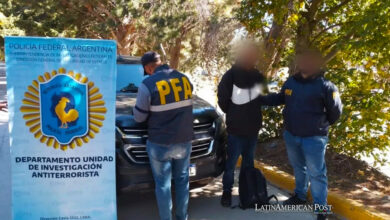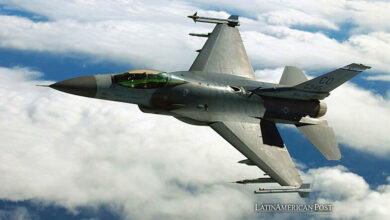The Infamous Story Of The Flights of Death: Why Were 4 Argentine Ex-Soldiers Convicted?
After 39 years of ending the last Argentine dictatorship, 4 soldiers were sentenced to life imprisonment for their participation in what is known as the death flights .

Photo: Gustavo Molfino
LatinAmerican Post | July Vanesa López Romero
Listen to this article
Leer en español: La infame historia de Vuelos de la muerte: ¿por qué fueron condenados 4 exmilitares argentinos?
This December 10 will mark the 39th anniversary of the end of the National Reorganization Process (PRN) in Argentina, a civic-military dictatorship that began with a coup in March 1976 and was presided over by the late Jorge Rafael Videla, convicted in 1985. for crimes against humanity and state terrorism. Although Videla was the face of the PRN dictatorship, the military sector and civil sectors such as business and the Catholic Church participated in it, so investigations and trials continue to be carried out.
In fact, on July 4, four soldiers were sentenced to life in prison for the death flights. They are Santiago Omar Riveros, former commander of Military Institutes, 98 years old; Luis del Valle Arce, former commander of the Aviation Battalion 601, 93, and Delsis Malacalza, 85, and Eduardo Lance, 79, also former members of the aforementioned Battalion. All four are currently under preventive house arrest.
This trial was held exclusively to deal with the crimes against Juan Carlos Rosace, Adrián Enrique Accrescimbeni, Rosa Eugenia Novillo Corvalán and Roberto Ramón Arancibia, who were detained by the state in Campo de Mayo, one of the largest barracks in Argentina that is recognized for being a clandestine detention center during the dictatorship.
What were the death flights?
In 2012, the specific investigations into the death flights were completed and the methodology behind these events was revealed. According to a report by Judge Sergio Torres, head of the National Federal Criminal and Correctional Court No. 12, this method was used in order to eliminate evidence of the crimes committed. This consisted of assuring the victims that they would be taken to a "recovery farm", then drugged with Pentothal and shot before boarding the plane, from which they would be thrown into the sea. In fact, the perpetrators knew this procedure as "transfers." For Torres, these supposed "transfers" mean "the massive physical elimination" of the disappeared and detained.
Also read: The Low Hours of the New Presidents in Latin America: Boric, Lasso and Castillo
The report collected dozens of testimonies from survivors. Martin Grass, one of them, mentioned that “Every Wednesday, exceptionally on Thursdays, the 'transfers' were carried out . Initially, it was a general belief among the surviving prisoners that the transfers were made to other labor camps presumably used in the south of the country. In reality, the transfer led to death.” Apparently, Tuesdays was the day that the officers met to define who would not be transferred, since the logic was that all of them would be transferred.
Despite the efforts of the dictatorship not to leave evidence of its crimes, since its first year (1976) bodies began to appear on the Argentine and Uruguayan coasts, only to be identified years later as detainees from the Campo de Mayo, from the ESMA (Superior School of Mechanics of the Navy) and El Campito, the latter two also clandestine detention centers.
This investigation, which has taken more than a decade, is very important not only to clarify what happened during the last Argentine dictatorship, but also to recognize the individual crimes that have been denounced by civil society and the victims and survivors not only of a dictatorship but of specific brutal acts against their humanity and integrity.





